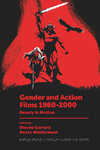Mostrar o rexistro simple do ítem
Gender Spaces in Action Films: The Mad Max Franchise
| dc.contributor.author | Barros-Grela, Eduardo | |
| dc.date.accessioned | 2024-01-11T10:48:41Z | |
| dc.date.issued | 2023 | |
| dc.identifier.citation | Barros-Grela, Eduardo. "Gender Spaces in Action Films: The Mad Max Franchise", in Gender and Action Films 1980-2000. Beauty in Motion, ed. Steven Gerrard and Renée Midllemost. Bingley: Emerald, 2023, pp. 23-36. https://doi.org/10.1108/978-1-80117-506-720221002 | es_ES |
| dc.identifier.isbn | 978-1-80117-507-4, | |
| dc.identifier.uri | http://hdl.handle.net/2183/34817 | |
| dc.description.abstract | [Abstract] Action films have traditionally been included in a category of popular cinema that enhanced and celebrated male heroes as the epitome of masculinity. Classical representations of men in this genre included notorious characters such as Indiana Jones, John Rambo or John McClane, to name just a few, who were conceived as characteristic of heteronormative and male-based aesthetics. The films in which these characters appeared reaffirmed a model of masculinity that perceived women as just an accessory that complemented men’s attributes, but there were other examples within the genre that offered more complex views in the treatment of gender roles. Therefore, this chapter will focus on the evolution of the roles played by men and women in the Mad Max action film series, and will discuss how the representation of gender is determined in the franchise by the mediation of space in the generation of male and female roles. The different representations of The Wasteland in Mad Max have contributed to locate characters in positions that have traditionally been associated with either men or women, such as cars, roads, wilderness or domestic environments. However, the evolution experienced by director George Miller’s gender awareness, from the representation of the original Max Rockatansky in the first Mad Max film to his relegation to a supporting role in the latest production, in favour of iconic Imperator Furiosa, has provided a description of how the resignification of these spaces has been fundamental in presenting female characters as autonomous, independent and performative subjects, and male characters as active yet not intrusive participants in the empowerment of women and in dismantling male privilege | es_ES |
| dc.language.iso | eng | es_ES |
| dc.publisher | Emerald | es_ES |
| dc.relation.uri | https://doi.org/10.1108/978-1-80117-506-720221002 | es_ES |
| dc.subject | Action | es_ES |
| dc.subject | Gender | es_ES |
| dc.subject | Mad Max | es_ES |
| dc.subject | Masculinity | es_ES |
| dc.subject | Empowerment | es_ES |
| dc.subject | (Post) feminism | es_ES |
| dc.title | Gender Spaces in Action Films: The Mad Max Franchise | es_ES |
| dc.type | info:eu-repo/semantics/bookPart | es_ES |
| dc.rights.access | info:eu-repo/semantics/embargoedAccess | es_ES |
| dc.date.embargoEndDate | 9999-99-99 | es_ES |
| dc.date.embargoLift | 9999-99-99 |






